Hello FACNM Community,
My thoughts continue to be with those affected by the many wildfires burning across northern New Mexico. Thank you to all the first responders working hard to keep New Mexican communities safe.
Here are some resources related to the wildfires:
For accurate and up-to-date information about the wildfires, please visit Inciweb.
Mental Health - https://nmcrisisline.com/ 1-855-NMCRISIS (662-7474)
Your Community and Watershed - https://afterwildfirenm.org/
Ways to Help
In the spirit of continuing our incremental progress towards making out communities better adapted to wildfire, this week’s Wildfire Wednesday newsletter shares information to support safer and more equitable wildfire response for people with disabilities. The following resources were shared from the national Fire Adapted Communities learning network (FAC Net).
Thanks,
Gabe
Functional Needs during Wildfire
For the purposes of this blog post the phrases “people with disabilities” and “people with functional needs” are used interchangeably to refer to a variety of conditions that require special attention during a wildfire.
“Emergency planners must have the ability to reach everyone in their communities to help them prepare for, respond to and recover from all types of emergencies. This includes community members with access and functional needs. All people in the community need to have accurate and trusted information in order to know what to do and when to do it. (from the Functional Needs Planning Toolkit).”
Defining Functional Needs
A Functional Needs Planning Toolkit by the National Response Network defines functional needs as:
“Populations whose members may have additional needs before, during, and after an incident in functional areas, including but not limited to: maintaining independence, communication, transportation ,supervision, and medical care. Individuals in need of additional response assistance may include those who have disabilities; who live in institutionalized settings; who are elderly; who are children; who are from diverse cultures; who have limited English proficiency or are non-English speaking; or who are transportation disadvantaged.”
In looking at and assessing risk in emergencies, the individuals most impacted by an emergency have functional needs in the following areas:
Communications—relates to the individual’s ability to receive critical warnings and other emergency information, communicate effectively with emergency response personnel, and understand information being communicated so they can act to help themselves. Individuals may require auxiliary aids and services and may need to have information given to them in alternate formats.
Maintaining health—many will require continued access to specialized medical equipment, medications, supplies or personal assistance to maintain their health and prevent the decline of medical conditions if they are removed from their daily environments due to a disaster.
Independence—relates to support that people may need to remain independent and to take care of themselves like durable medical equipment, communication devices, service animals, and accessible facilities.
Safety, Support services and Supervision—some individuals require the support of people (personal care assistants, family, or friends) to cope with the challenges of emergencies; some may lack the cognitive ability to assess emergency situations and react appropriately without support and/or supervision.
Transportation—some individuals cannot drive, some need specialized vehicles for transport, and some do not have their own vehicles and rely solely on public transit.
These functional needs have definite impacts on how people will respond in an emergency. Whole community emergency planning committees need to include people with access and functional needs and representatives from organizations providing services for people with disabilities to truly plan for everyone in the community.
Tools for Working with Functional Needs
This emergency communications board can be used to support communication with individuals that are non-verbal or that do not speak English (see below)
There are many different considerations when working with the types of functional needs identified in the section above. The Functional Needs Planning Toolkit provides information needed to incorporate disabilities into our planning for:
Notifications and warnings
Evacuation
Emergency transportation
Sheltering
Effective communications
To support the continued learning about how to work with functional needs, the national Fire Adapted Communities learning network compiled the following resources:
A general guide on disability etiquette - Tips on interacting with people with disabilities
An overview presentation of how to engage people with disabilities and the Functional Needs Planning Toolkit - these resources provide information and links to help organizations begin planning to engage people with disabilities. Within the overview, there are many technologies and organizations that can support fire departments in their process of planning for functional needs.
Emergency communication board - To support emergency communication with people who are non-verbal or do not speak English.
Emergency power planning - This emergency power planning checklist is for people who use electricity and battery dependent assistive technology and medical devices.




